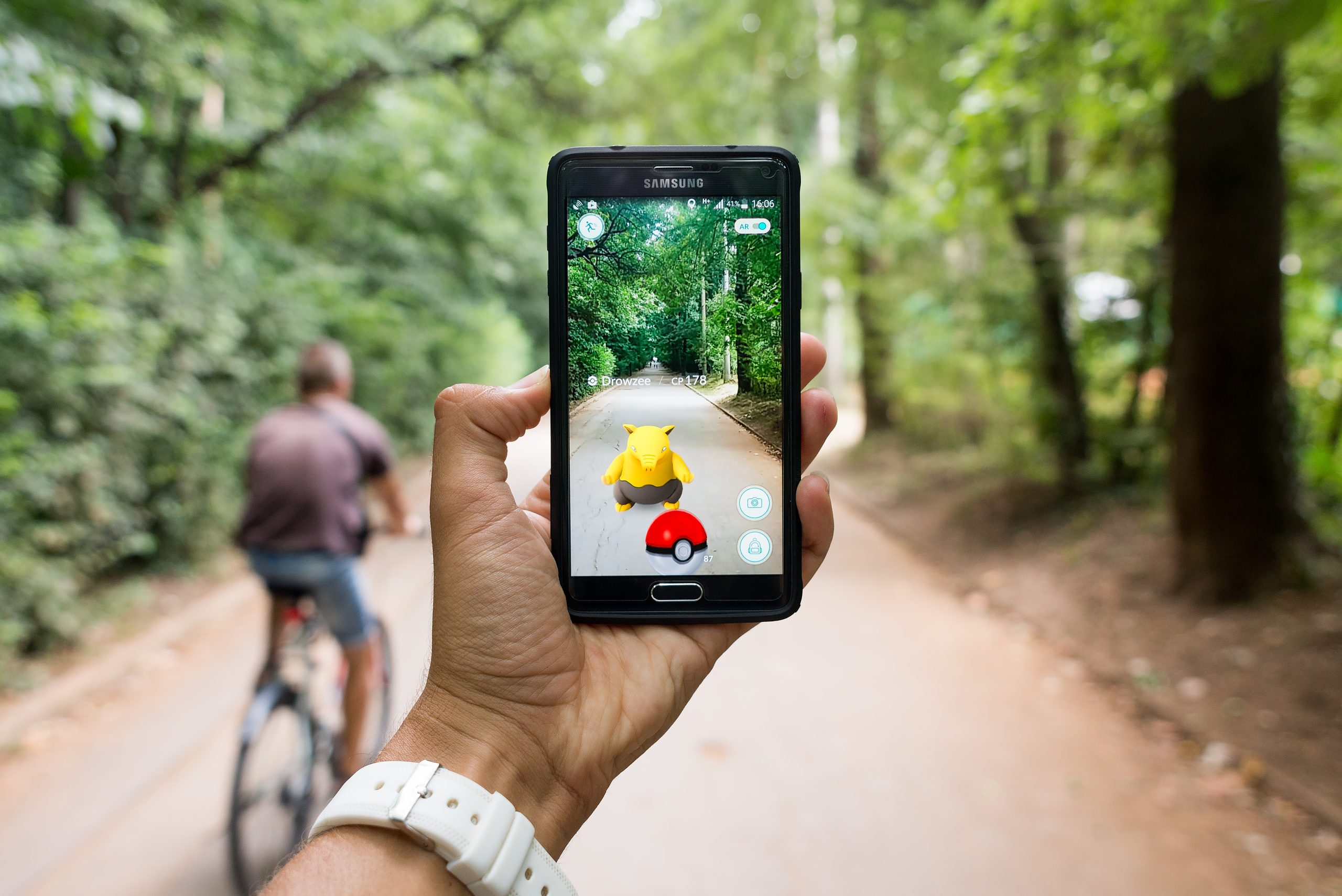During a trip last year to San Diego, Eduardo Tanner had an unusual wake-up call. At 3 a.m., his then girlfriend roused him from slumber for a peculiar kind of birding expedition. Instead of binoculars and a field guide, they grabbed their smartphones and set out into the night.
They were on the hunt for “Hawluchas,” virtual avian-like creatures that had been spotted near the Mexican border and had apparently spawned just down the street from their hotel, next to the taco truck they’d eaten burritos from a few hours earlier.
“It had to be done,” recalls Tanner, 37 of Salem, Mass. “I don’t think I even put my socks on, I just put my shoes on. I was still kind of sleepy.”
Tanner is part of a unique breed: adults who incorporate the mobile-phone game Pokémon Go into their travels. The game is augmented reality, which means it overlays cute monsters known as Pokémon onto your real-world surroundings. Imagine strolling Rome’s cobblestone streets when suddenly your phone vibrates, and a rare creature is perched near the Colosseum. Through your smartphone camera, the Pokémon is ready to be “caught.”
‘A bit of novelty’
Niantic, the company behind Pokémon Go, incentivizes the travel by unleashing specific Pokémon, “shinies” and “trims” one can only get in certain regions, and by hosting fan events.
Actor Seth Green, known for his role in the Austin Powers series and as a voice actor on the “Family Guy,” plays while traveling. A highlight was catching a Pokémon in Portugal’s Chapel of Bones, a chapel lined with human bones on its walls.
“It is just a bit of novelty,” he says of his Pokémon pursuits, “but in a world where joy itself is a commodity, that is a pretty easy exchange.”
Green will be at restaurants while traveling with friends—and might step out to see if there are Pokémon in the vicinity. It’s possible not everyone in your party will get the fascination.
“You have to use your discretion with company and always be aware of who would be an enthusiastic participant versus someone who could take offense,” he says. “It is the same as any real phone usage etiquette.”
Outpacing the kids
Those hooked include Lene Grooss, 62, a program manager in the financial sector, and her 59-year-old husband Ole, a commercial-excellence manager, of Hillerod, Denmark. Lene dove into Pokémon Go years ago to connect with her kids. As time passed, Ole, joined in, and now the couple’s enthusiasm has outpaced their children. “They think we are nerds,” jokes Lene.
Lene and Ole have played Pokémon Go across Europe, the Caribbean and Asia. The game gives them ideas for routes to explore, and they’ll run into other easy-to-spot travelers who are also playing. One who stands out was an 80-year-old woman they met while on a Pokémon walk.
“That was her way of getting out and meeting people,” Ole says. “That kind of baffled me, especially in the beginning, because I had this view that it was only kids playing Pokémon.”
When vacationing with family, they’ll go out creature catching, say early morning or after their companions have retired for the evening. “Sometimes we go back to the hotel and we look at one another and say ‘Maybe we should take half an hour,’” Lene says. “And then we go back out again.”
The game sparks a friendly rivalry—Lene is at a higher level than Ole and wants to keep it that way. She packs a purse-sized power bank to keep her phone charged. “No sharing,” she quips.
Fans like that Pokémon Go is one of the few apps on their phones that encourages people to get out of the house and interact face-to-face.
Honeymooners
But some players, dubbed “spoofers,” cheat by using VPN apps to change their phone’s location, and snag regional exclusives without leaving the couch. Many in the Pokémon community don’t approve. “I think it’s cheating, and I don’t know why they do it,” says Lene.
Anne Bains’s honeymoon, with her now-husband Dali, was a global Pokémon chase.
“It gave us a focus of where to go,” says Anne, 33, a pharmacist—of destinations including London, New York, Japan, Australia, New Zealand, and Hong Kong.
Dali, 34, also a pharmacist, is among the world’s top collectors of “shinies,” with more than 1,000 of the rare, uniquely colored creatures. He is just 18 shy of having them all, and often trades with other players at Pokémon events.
But to score those trades, Dali needs to come prepared with valuable Pokémon of his own.
Cue the family trip to Egypt in April 2023, with Dali, Anne, his mom—and four dozen fluffy white dog-like Pokémon known as Furfrous. Sure, they wanted to see the pyramids, but Dali had a mission: dress up his Furfrous flock in rare pharaoh costumes, or trims, that Pokémon Go players can only get in Egypt.
Dali made sure to snap a photo of his pharaoh-adorned Pokémon in front of the pyramids—proof his Egyptian Furfrous were legit. “When you trade with people, one question that normally gets asked is, ‘Have you actually been?’” Dali says.
Mount Everest
In March, Lene and Ole trekked up to the Mount Everest base camp in Nepal, putting their Pokémon Go dedication to the ultimate test. With no signal and frigid temperatures that froze their phones outdoors, they had to rely on tea houses along the way for Wi-Fi and just enough warmth to keep their devices running.
That was all Lene needed to keep playing and come across and catch “Simisear,” a Pokémon monkey with flame-colored fur. “That is special,” she says. “That is one I’ll definitely keep and never trade.”
Write to Salvador Rodriguez at salvador.rodriguez@wsj.com



